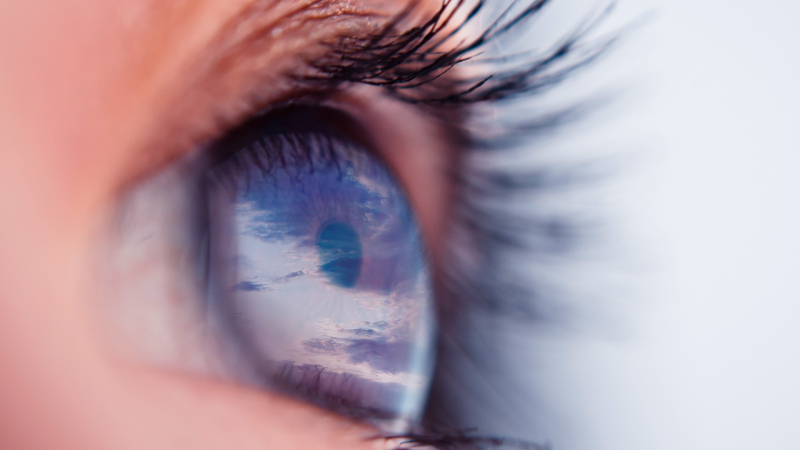Glaucoma
What is Glaucoma?
Your eye contains aqueous humor, a fluid that naturally leaves your eye through the drainage angle located at the junction of the iris and cornea. Glaucoma can occur when the drainage angle does not function properly, causing the fluid to build up within the eye. The most common form of glaucoma is open-angle, and occurs when your drainage angle is narrowed or partially clogged. Since this type of glaucoma usually develops slowly, the primary symptom is gradually compromised vision, beginning with peripheral vision. On the other hand, closed-angle glaucoma is far less common, and involves changes to the shape of the iris. As the iris protrudes forward, it blocks the drainage angle. This type of glaucoma develops rapidly, and should be treated immediately. Symptoms include eye pain, nausea, and the rapid loss of sight.
Glaucoma
What is Glaucoma?
Your eye contains aqueous humor, a fluid that naturally leaves your eye through the drainage angle located at the junction of the iris and cornea. Glaucoma can occur when the drainage angle does not function properly, causing the fluid to build up within the eye. The most common form of glaucoma is open-angle, and occurs when your drainage angle is narrowed or partially clogged. Since this type of glaucoma usually develops slowly, the primary symptom is gradually compromised vision, beginning with peripheral vision. On the other hand, closed-angle glaucoma is far less common, and involves changes to the shape of the iris. As the iris protrudes forward, it blocks the drainage angle. This type of glaucoma develops rapidly, and should be treated immediately. Symptoms include eye pain, nausea, and the rapid loss of sight.
Glaucoma
What is Glaucoma?
Your eye contains aqueous humor, a fluid that naturally leaves your eye through the drainage angle located at the junction of the iris and cornea. Glaucoma can occur when the drainage angle does not function properly, causing the fluid to build up within the eye. The most common form of glaucoma is open-angle, and occurs when your drainage angle is narrowed or partially clogged. Since this type of glaucoma usually develops slowly, the primary symptom is gradually compromised vision, beginning with peripheral vision. On the other hand, closed-angle glaucoma is far less common, and involves changes to the shape of the iris. As the iris protrudes forward, it blocks the drainage angle. This type of glaucoma develops rapidly, and should be treated immediately. Symptoms include eye pain, nausea, and the rapid loss of sight.

Why does Glaucoma need to be treated?
Glaucoma is an eye disease that causes damage to the optic nerve. Glaucoma is the leading cause of blindness and is not limited to the elderly—it can appear in children and young adults as well. Glaucoma is caused when the natural fluids of the eye do not drain properly, which causes intraocular pressure (IOP) to build. Over time, this damages your optic nerve. When you make your appointment with our glaucoma specialist, Dr. Gallardo, he will examine your eyes and discuss your treatment options. He prefers to start patients with more conservative treatment options such as medication and slowly progress to laser surgery if you do not respond to the medications.

Non-surgical treatment options
Medication is often the first line of glaucoma treatment. You may be prescribed a topical or oral medication. Topical medications such as eye drops and ointments work to reduce IOP by increasing the outflow of fluid or reducing the amount of fluid produced by the eye. There are several types of topical medications you may be prescribed. Miotics and epinephrines increase the outflow of fluid. Beta-blockers, carbonic-anhydrase inhibitors, and alpha-adrenergic agonists reduce the amount of fluid. Prostaglandin analogs increase fluid outflow through a secondary drainage path. Carbonic anhydrase inhibitors are the most common oral medication prescribed. You may be started on one medication or a combination of medications and if you do not respond to initial medications, they can be switched until all possible combinations of medication have been exhausted. At this point, Dr. Gallardo may recommend surgery. Glaucoma is a serious disease and can cause damage to your eyes and even blindness if left untreated.
Surgical Procedures
Laser Surgery
Patients who have not responded to prior treatments of medication or who have a severe or rapidly-developing case of glaucoma may require minimally-invasive laser surgery. The kind of surgery you require will depend on the type of glaucoma you have.
- Trabeculoplasty removes tissue from the trabecular meshwork with a laser to increase the flow of fluid and relieve eye pressure. This form of surgery is used to treat patients with open-angle glaucoma.
- Iridotomy creates a small hole in the iris so fluid can drain properly. This surgery treats closed-angle glaucoma.
- Cyclophotocoagulation removes ciliary tissue to decrease fluid production. This procedure is performed under local anesthesia to treat patients who have not responded to other surg treatments. This particular surgery requires multiple treatments, but has a high success rate and low risk.
Conventional Surgery Procedures
If the aforementioned laser surgeries do not relieve IOP, Dr. Gallardo may recommend conventional, or trabeculectomy, glaucoma surgery. This surgery removes a tiny piece of your eye to create a new drainage path and increase fluid outflow.
State-Of-The-Art Surgery Procedures
In addition to laser surgery and conventional glaucoma surgery, there are two newer treatments available. The first is the implantation of a microscopic drainage tube called a micro shunt. This procedure may be a good option for patients who have not responded well to other treatments. Performed in conjunction with cataract surgery, the micro shunt procedure reduces ocular pressure by allowing excess fluid to drain through an alternative passageway.
The second alternative is canaloplasty. It is similar to the micro shunt procedure in that is minimally invasive and alleviates pressure through the use of a microscopic device. In this case, a micro catheter opens the eye’s natural drainage canal, allowing it to be threaded with a suture that keeps it open. The micro catheter is then removed, and the suture remains to keep tension on the inner wall of the canal.
Contact Our Office to
Learn More
Learn More

